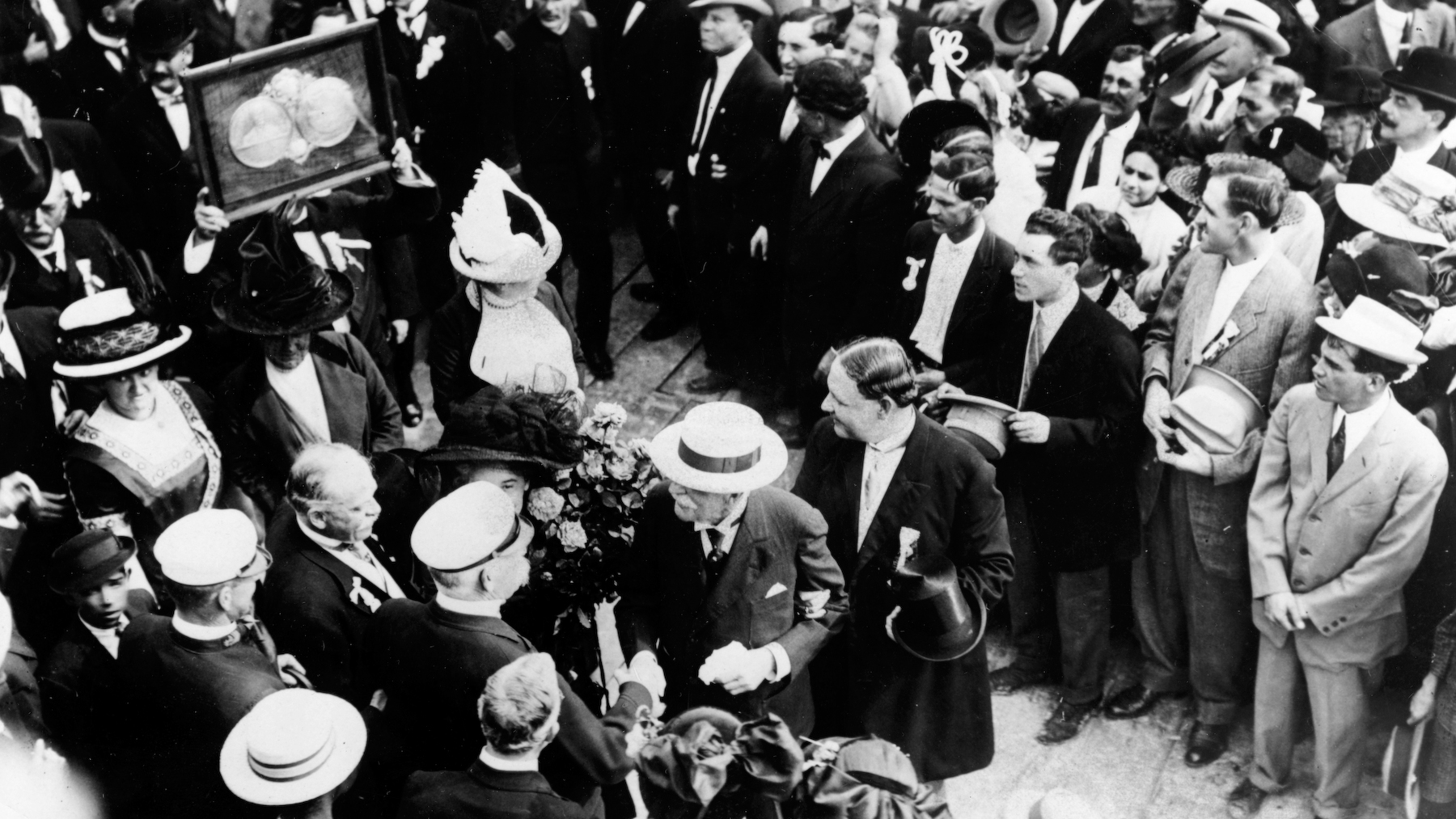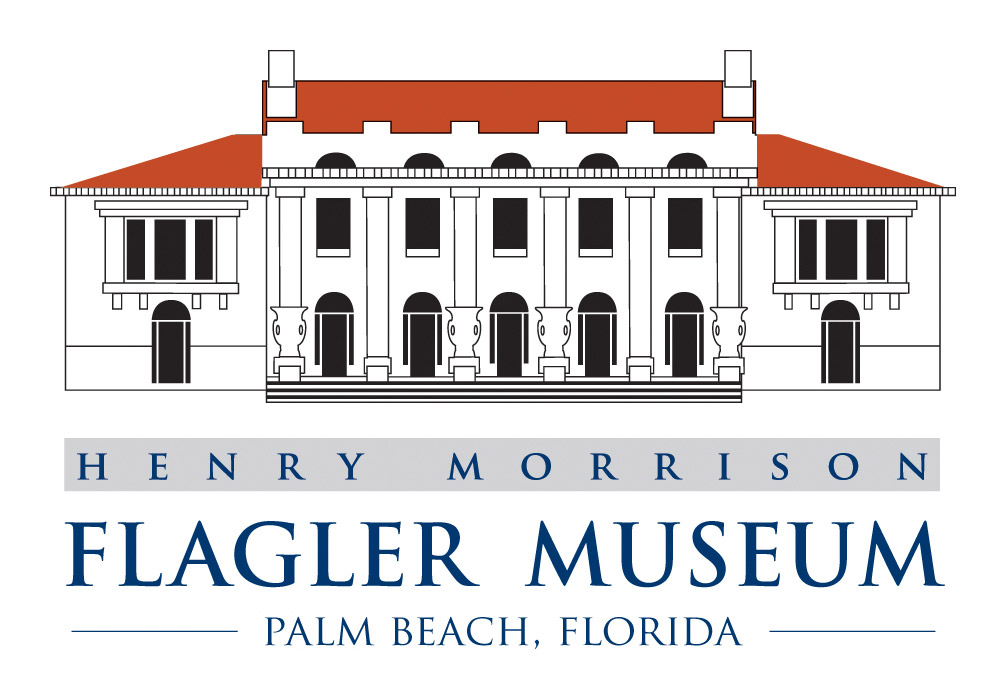
Florida East Coast Railway
In 1912 Henry Flagler arrived aboard the first train into Key West, marking the completion of the Florida East Coast (FEC) Railway's Over-Sea Railroad to Key West. With the completion of the Over-Sea Railroad the entire east coast of Florida, from Jacksonville to Key West, was linked by a single railroad system. The FEC was the product of Flagler's resources and imagination. Flagler's construction of hotels at points along the railroad and his development of the agricultural industry through the Model Land Company established tourism and agriculture as Florida's major industries, which remain so even now more than a century later. In essence, Henry Flagler invented modern Florida. Amazingly, Flagler accomplished these feats after retiring from his first career and having reached an age equal to the average life expediency for an American male of the time. Flagler had co-founded Standard Oil with partners John D. Rockefeller and Samuel Andrews, long before becoming interested in Florida. Standard Oil remained the largest and most profitable corporation in the world for more than a century.
When Flagler first visited Florida in 1878, he recognized the state's potential for growth but noticed a lack of hotel facilities. Flagler returned to Florida and in 1885 with an eye toward developing the area around St. Augustine and began building a grand hotel, the Hotel Ponce de Leon. Flagler realized that the key to developing Florida was a solid transportation system and consequently purchased the Jacksonville, St. Augustine & Halifax Railroad. He also noticed that a major problem facing the existing Florida railway systems was that each operated on different gauge systems, making interconnection impossible. Shortly after purchasing the Jacksonville, St. Augustine & Halifax Railroad, he converted the line to standard gauge.
The Jacksonville, St. Augustine & Halifax Railroad served the northeastern portion of the state and was the first railroad in what would eventually become the Florida East Coast Railway Company. In addition to improving the railroad, Flagler built schools, a hospital and churches in St. Augustine, systematically revitalizing the largely abandoned historic city.
Flagler soon purchased three more railroads: the St. John's Railway, the St. Augustine and Palatka Railway, and the St. Johns and Halifax Railroad so that he could provide extended rail service on standard gauge tracks. With the addition of these three railroads, by spring 1889 Flagler's system offered service from Jacksonville to Daytona. Continuing to develop hotel facilities to entice northern tourists to visit Florida, Flagler bought and expanded the Hotel Ormond, located along the railroad's route north of Daytona.
Beginning in 1892, when landowners south of Daytona petitioned him to extend the railroad 80 miles south, Flagler began laying new railroad tracks; no longer did he follow his traditional practice of purchasing existing railroads and merging them into his growing rail system. Flagler obtained a charter from the state of Florida authorizing him to build a railroad along the Indian River to Miami and as the railroad progressed southward, cities such as New Smyrna and Titusville began to develop along the tracks.
By 1894, Flagler's railroad system reached what is today known as West Palm Beach. Flagler constructed the Hotel Royal Poinciana on the eastern shore of Lake Worth in what is now known as Palm Beach. He also built The Breakers Hotel on the ocean side of Palm Beach, and Whitehall, his private 75-room, 100,000 square foot winter home. The building of the hotels, coupled with railroad access to them, established Palm Beach as a winter resort for the wealthy members of America's Gilded Age. The Hotel Royal Poinciana soon became the world’s largest resort.
Probably before he even extended his railroad to Daytona, Henry Flagler was seriously considering going all the way to Key West. However, he was content to wait for the right opportunity, which came as a result of the severe freezes of 1894 and 1895, which affected the state as far south as Palm Beach. To further convince Flagler to continue the railroad to Fort Dallas, he was offered land from private landowners, the Florida East Coast Canal and Transportation Company, and the Boston and Florida Atlantic Coast Land Company in exchange for laying track to Fort Dallas and that was enough to induce him to begin doing so immediately.
In September 1895, Flagler's system was incorporated as the Florida East Coast Railway Company and by 1896, it reached Biscayne Bay, the largest and most accessible harbor on Florida's east coast. To further develop the area surrounding the Fort Dallas railroad station, Flagler dredged a channel, built streets, instituted the first water and power systems, and financed the town's first newspaper, the Metropolis. When the town incorporated in 1896, its citizens wanted to honor the man responsible for the city's development by naming it, "Flagler." He declined the honor, persuading them to use instead the native American name for the river running through the settlement, "Miama" or “Miami.”
When the United States announced in 1905 its intention to build the Panama Canal, Flagler embarked on perhaps his greatest challenge: the extension of the Florida East Coast Railway to Key West, a city of almost 20,000 inhabitants located 128 miles beyond the end of the Florida peninsula. A train depot in Key West, the United States' closest deepwater port to the Canal, could not only take advantage of Cuban and Latin America trade, but significant trade possibilities with the west via the new Canal.
The construction of the Over-Sea Railroad required many engineering innovations as well as vast amounts of labor and monetary resources. The construction, employed up to four thousand men were. During the seven years of construction, five hurricanes threatened to halt the project with three causing major damage. Despite the hardships, and the engineering challenges, the Over-Sea Railroad, the final link of the Florida East Coast Railway, was completed on January 22, 1912, just weeks after Flagler’s 82nd birthday.
Linking the entire east coast of Florida with a transportation system and establishing tourism and agriculture as the basis of the state’s economy, at the time was largely an uninhabited frontier, demanded a great deal of foresight and perseverance. More than a century later, the mainstays of Florida’s economy are still agriculture and tourism and Flagler’s incredible legacy as the inventor of modern Florida can still clearly be seen throughout Florida.







